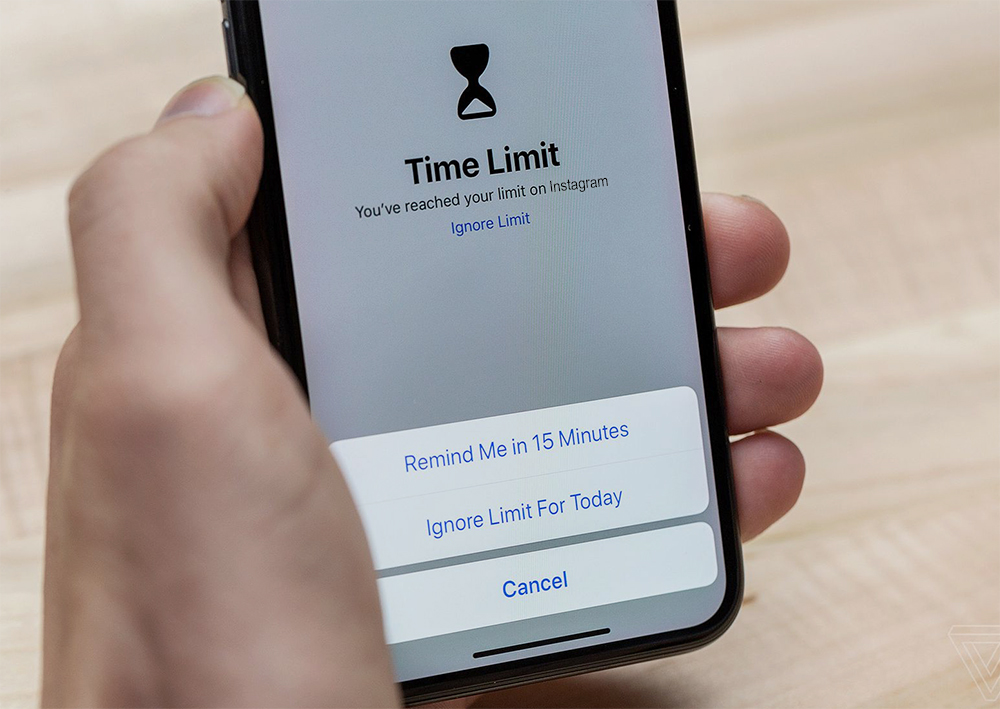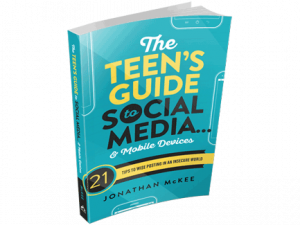
Reasonable Rules that Won’t Wreck the Relationship
Jonathan McKee
What age should I get my kid a phone?
How long should I allow my son to play his video games each day?
What age should I allow my kids on social media?
What if my teen demands she needs her phone in her bedroom at night?
These are by far some of the most common real-world questions I’m asked at my parent workshops each month. No longer is there any strife about curfews (kids would actually have to leave the house to need one of those), or piling too many kids in the car (teens would actually have to want a driver’s license) . . .today’s boundaries are almost all linked to screens and social media.
Let’s look at some reasonable rules that today’s experts recommend.
A Whole New Mess
Parenting was way easier 20 years ago.
There, I said it. Blast me with criticism in the comments if you want—I’ll probably stand by my statement. Parenting has always been difficult, but screens are creating a whole new mess of problems parents just can’t ignore. . .like the plummeting self-esteem of a generation who desperately wants to be “liked.”
The overwhelming majority of parents are struggling with how to teach their kids media discernment, because almost everyone has access to screens. In fact. . .
- 97% of teens have access to social media
- 89% of teens have a smartphone
- 79% bring their devices to their bedroom with them at night
. . .and believe it or not. . .
But you don’t even need to see the numbers. All you need to do is take a look around you (which ironically, many of us are not doing, because we’re glued to our phones) and you’ll notice a world saturated with Wi-Fi signals and screens.
So how can parents respond reasonably in a world where the average kid gets a phone at age 10 and lies about their age to get on social media? Think about it. If your sixth grader comes home and pleads, “Come on! All my friends have phones!” They might not be stretching the truth.
So what do you say when your 11-year-old asks if she can have a smartphone, especially when some parents claim it’s a wise decision?
Does saying, “Sorry, not yet!” make you a tyrant?
Does requiring your kids to share their Smartphone’s password make you a helicopter parent?
What’s the alternative, let them do whatever they want? “Here’s a screen for your bedroom and an HBO subscription. Enjoy Zendaya’s new show!”
Is it possible that there’s a balanced approach?
Bonding and Boundaries
Parenting requires a balance of bonding and boundaries. Kids build confidence and glean values through nurturing and bonding time. But kids also need healthy boundaries to protect them, especially when they’re young.
When it comes to boundaries, most parents would agree with, “Don’t play tag on the freeway.” But how about, “No screens in the bedroom?” Only 21% of parents enforce this.
Why?
Ignorance?
Parental peer pressure?
This is what makes parenting so difficult today. Many parents don’t honestly have any idea what their kids are accessing on their screens. And in a world where the majority of kids are given free reign with screens, it’s even more difficult to say, “Sorry, but no.”
So how do we know when we’re being too strict? If Mom or Dad are over-constrictive with rules it tends to hurt the relationship. No, it’s not our job to be our kid’s friend, but it’s also not our job to be a drill sergeant.
I know because I did this with my son.
I was so focused on “video game screen time” limits that I forgot to just sit down at times and play Xbox with him. Did he need screen limits? Yes. But he didn’t need a dad who was so focused on rules that it hurt the relationship.
This means:
DO: Walk into your kids’ room every once in a while, plop on the floor and ask them about their world. Then just listen. If you don’t know what to ask, then ask a fun question like, “If you could text anyone in the world and you knew they would text you back, who would you text?” Maybe even follow it up with, “What would you ask them? What would you hope they reply?”
DON’T: Just walk into your kids’ room and ask, “Have you already reached your hour of social media today? Let me see your phone. Did you finish your homework? Well get to it!”
The point is, parents don’t always need to be in parole officer mode. Sometimes we need to be proactive about simply engaging our kids in meaningful conversation.
Let me ask you a question. Where do you think our kids will glean values from us? From our restrictions we impose on them, or the meaningful conversations we have while on a hike together?
Let me put it another way.
Don’t become so focused on blocking out the lies that you forget to talk about truth!
Bonding and boundaries.
Let’s get to the boundaries. (That’s why you clicked on this article in the first place, right?)
What are some sensible screen-limits that won’t stifle our kids ability to learn discernment with their devices?
Bare Minimum Boundaries
Let’s take a peek at a few helpful practices and boundaries that most experts agree on.
1. Delay screen ownership
If your young kids already have screens, then don’t beat yourself over the head, you definitely aren’t alone. But if you haven’t given your kids screens yet, please, don’t be in any hurry.
If your 12-year-old asks for the car keys do you give them to him? No, you wait until he’s 16, demonstrated responsibility, sat next to you driving for 50 hours, and passed a series of tests. So why are we so quick to just hand our kids a Smartphone? Which is more dangerous, a car, or a device that most experts are citing as one of the key factors hurting our kids’ mental health today?
So how long should we wait before we give our kids a smartphone? Bill Gates waited until his kids were in high school. So did Jim Steyer, Chief Executive of Common Sense Media, both tech guys who know the effects of screen time on young people.
Are you curious what people in the tech industry who study this all the time do with their own kids? New York Times released an expose in the last year revealing that those who studied screen-time and phone exposure give one simple instruction when they leave the house: “no screens.”
So what about iPads or other tablets?
Let me ask you this. Do you think these experts above are worried about kids talking on the phone. . .or are they worried about all the other stuff their device offers? Think about it. The only difference between an iPhone and an iTouch is the cell signal. Your kid can use his iPhone in a field where he can only use his iTouch or iPad when he has a Wifi signal. Other than that. . .exact same stuff. When you hand your kid a tablet, you are giving them the same access to social media, same games, same Netflix, same ability to search the web.
Simon Sinek, author, and professor at Columbia University speaks to this in his talk about smartphone addiction and the dopamine hits social media provides:
“Parents have to intervene. They have to stop giving our kids free access to social media and phones at young ages. They are not ready for it. Their minds cannot cope with the dopamine. They can only have it up to certain hour and you take it away. They are children. You can take the phone away. We’ve got to intervene.”
So delay device ownership. The answer isn’t no; it’s not yet. And if for some reason you feel you must give your kids a device, then bare minimum. . .
2. Teach them to be device wise
Confession: This isn’t a boundary. This is the next logical step after delaying screen-time before you give your kids a device. In the same way we spend hours upon hours teaching our kids to drive, we should spend considerable time teaching our kids how to be device-wise.
Who should we connect with?
What should we post?
What entertainment is okay to stream?
How much time is too much screen-time?
These are some of the first questions young people will have to figure out for themselves if no one spends time dialoguing with them about these issues. Sadly, parents typically either let kids learn these answers on their own (the hard way), or just enforce these as rules without ever explaining the “why” behind them.
Get to the “why” right away. Help our kids learn the “why” by dialoguing with them about who to connect with, what to post, what to stream, and how much screen time to soak in each day. Maybe even take them through a book that leads them to these answers via discussion questions.
Once you proactively engage them in conversation about many of these issues, then and only then give them some “driving practice” with their own device. But even then. . .
3. Parents have the passwords
When parents have passwords, Mom and Dad can set the iPad to require a password for practically anything. So if you give your 8-year-old a tablet (and I don’t think you should), then at least you can set it to where she can’t download any apps without your permission, you can limit her browsing to only certain web sites, and you can set screen-limits (more on that in a minute).
Do you need your kids’ passwords when they’re 17? Probably not. Remember to keep your eyes on the calendar. Someday your kids are going to turn 18 and have the freedom to move out and begin making these decisions on their own. Your job as the parent is to equip them for that day. That means slowly releasing them to practice these decisions. This incremental independence might allow them to begin downloading some apps on their own in high school, dialoguing about it with Mom and Dad.
Young kids need lots of guidance. Older kids need an increasing amount of freedom and practice making decisions.
But if you decide to give your 8, 10 or 12-year-old a device, these kids will need lots of boundaries, and strong passwords (not your birthday) are the key to keeping those boundaries intact.
But don’t become overconfident in your parental controls. Kids are smart. Their friends are smart. The week IOS and droid released the new screen limits in 2018, kids were hacking through them, discovering loopholes, and the word spread like wildfire on the web. Every parent I’ve met who tells me, “Oh, I’m not worried. I’ve got everything blocked on my kids’ devices,” ends up eventually eating their words. And I’m not overgeneralizing there. I mean literally every parent I’ve ever heard say that has eaten their words. Why? We can’t block everything. Every expert who studies this stuff will tell you the same thing.
So don’t forget to partner passwords with meaningful conversations about media discernment (which hopefully you already began doing in step 2 above). You still have to talk with your kids about media discernment. Passwords won’t raise your kids.
4. No social media til at least 13
This is the easiest boundary yet. Why? It’s the law.
It’s called COPPA. And even if your kid has never heard of it, they know about it. Because when anyone tries so sign up for SnapChat, Instagram, Tick Tok, Twitter. . .most of the social media they desire. . .the first question the app will ask is to enter your birthday and year. If the kid is under 13 the app will kindly reply, “Sorry, you are not old enough to use this app.”
That’s because the Federal Trade Commission’s Child Online Privacy Protection Act (COPPA) doesn’t allow websites or social media apps to collect information from anyone under 13.
Does this work?
Not at all. Because no one’s policing it, especially parents. Every time I’m on a middle school campus I see countless 11 and 12-year-olds on SnapChat and Instagram because they simply lied about their age.
So the pressure is on. When you tell your kid, “Sorry, you’re not 13 yet; it’s the law.” Your kid is going to say, “But Chris has SnapChat and he’s 11!”
And you can simply reply, “Well, Chris’ parents suck.” (Actually, don’t say that.)
This is where parenting gets a little more tricky. All of a sudden good parents making wise decisions are deemed “the bad guy.” So be careful to not turn into the cold-hearted parole officer parent. Be empathetic. Ask them to explain what they’re feeling. Tell them, “I’m so sorry. That’s really frustrating. But here’s why I think the Federal Trade Commission made that rule. . .” And tell them stories about young people getting targeted by pedophiles (I include several of them in my book, The Teen’s Guide to Social Media & Mobile Devices).
If they want Instagram, do a Google search on “Instagram age recommendation” or “Instagram safety concerns” and read a few articles together. Go to a media discernment site like Common Sense Media and read their article about Instagram, which recommends kids don’t get Instagram until age 15. Ask your kids, “Why do you think Common Sense Media wants young people to wait until 15? Are they right?”
Sometimes parents just need to say, “Sorry, you have to wait” or “No.” This is one of those times.
And so is this next boundary. . .
5. Keep screens out of the bedroom.
Doctors have been recommending no screens in the bedroom for decades now, and parents collectively have been ignoring it. . .79% of parents anyway. Because that’s the percentage of teens who bring their devices into the bedroom every night.
I won’t spend too much time trying to convince you of this, because I recently covered this issue in detail in this article, But Mom, I really need my phone in my bedroom.
Don’t be afraid to state the obvious truth, “No, you don’t need your phone in the bedroom at night. You’re sleeping.”
“But I need it to wake me up in the morning!”
“Here’s $10. Buy an alarm clock at Wal Mart.”
Okay, maybe you don’t need to be that curt. In fact, read them that article linked above and ask them for their opinion. That article cites 19 different studies and other articles about the risks young people expose themselves to (sometimes literally) when they take their phone in their bedroom with them every night. Engage your kids in a discussion about this issue and give them a chance to express their opinion.
Should you bend on this one?
I wouldn’t. I happen to agree with Jim Steyer, CEO of Common Sense Media:
“There are times and places where phones, in particular, but all digital platforms should not be there. The bedroom is the obvious one.”
6. Limit screen-time
Every expert agrees with this one. The question usually ends up being, “How long?”
If most parents let their boys have free range with their game systems, they’d play for 14 hours straight. Here’s where limits can be very helpful.
Some parents think an hour per day game-time on school nights is a good limit, and then unlimited hours on the weekend. Others noticed that their kids would then never leave the house on the weekends, so they limit their boys to 2 or 3 hours game-time.
These are decisions you have to decide for yourself. Some experts are very conservative with screen-time. Others a little more lax. Maybe even meet as a family and discuss what limits everyone thinks is fair. And while you’re meeting together. . .
7. Establish tech-free zones
This is another example of a practice more than a boundary. But I’m reading a growing body of research revealing the benefits of tech-free zones, the simplest and most obvious being, “No tech at the table.”
Think of the benefit of a simple practice like this. You’re deeming the family dinner a sacred place where Dad, Mom and every kid all set their devices aside and focus on each other without interruption.
When Dad brings his phone to the table he’s telling everyone, “You guys aren’t very important to me, because I might need to get this.” When Dad turns his phone to ‘Do Not Disturb’ and sets it down in the other room he communicates, “You guys are the most important to me. Work can wait.”
Seek out tech free zones. Take family vacations to places with no Wi-Fi signal. Shut down the power grid on the house some day and make it an adventure. Studies where teens tried this found 93% of the teens “felt relieved” to take a break from social media.
Which of these practices or boundaries do you need to try this week?

OR FOR MORE ON THE SUBJECT OF SOCIAL MEDIA, SCREEN TIME AND THE PRESSURE TO BE LIKED, TAKE A PEEK AT JONATHAN McKEE’S EXTREMELY HELPFUL BOOK, THE TEEN’S GUIDE TO SOCIAL MEDIA & MOBILE DEVICES
Jonathan McKee
Jonathan McKee is the author of over twenty books including the brand new The Guy's Guide to FOUR BATTLES Every Young Man Must Face; The Teen’s Guide to Social Media & Mobile Devices; If I Had a Parenting Do Over; and the Amazon Best Seller - The Guy's Guide to God, Girls and the Phone in Your Pocket. He speaks to parents and leaders worldwide, all while providing free resources for parents on his website TheSource4Parents.com. Jonathan, his wife Lori, and their three kids live in California.



